RBS 2011 Annual Report Download - page 232
Download and view the complete annual report
Please find page 232 of the 2011 RBS annual report below. You can navigate through the pages in the report by either clicking on the pages listed below, or by using the keyword search tool below to find specific information within the annual report.-
 1
1 -
 2
2 -
 3
3 -
 4
4 -
 5
5 -
 6
6 -
 7
7 -
 8
8 -
 9
9 -
 10
10 -
 11
11 -
 12
12 -
 13
13 -
 14
14 -
 15
15 -
 16
16 -
 17
17 -
 18
18 -
 19
19 -
 20
20 -
 21
21 -
 22
22 -
 23
23 -
 24
24 -
 25
25 -
 26
26 -
 27
27 -
 28
28 -
 29
29 -
 30
30 -
 31
31 -
 32
32 -
 33
33 -
 34
34 -
 35
35 -
 36
36 -
 37
37 -
 38
38 -
 39
39 -
 40
40 -
 41
41 -
 42
42 -
 43
43 -
 44
44 -
 45
45 -
 46
46 -
 47
47 -
 48
48 -
 49
49 -
 50
50 -
 51
51 -
 52
52 -
 53
53 -
 54
54 -
 55
55 -
 56
56 -
 57
57 -
 58
58 -
 59
59 -
 60
60 -
 61
61 -
 62
62 -
 63
63 -
 64
64 -
 65
65 -
 66
66 -
 67
67 -
 68
68 -
 69
69 -
 70
70 -
 71
71 -
 72
72 -
 73
73 -
 74
74 -
 75
75 -
 76
76 -
 77
77 -
 78
78 -
 79
79 -
 80
80 -
 81
81 -
 82
82 -
 83
83 -
 84
84 -
 85
85 -
 86
86 -
 87
87 -
 88
88 -
 89
89 -
 90
90 -
 91
91 -
 92
92 -
 93
93 -
 94
94 -
 95
95 -
 96
96 -
 97
97 -
 98
98 -
 99
99 -
 100
100 -
 101
101 -
 102
102 -
 103
103 -
 104
104 -
 105
105 -
 106
106 -
 107
107 -
 108
108 -
 109
109 -
 110
110 -
 111
111 -
 112
112 -
 113
113 -
 114
114 -
 115
115 -
 116
116 -
 117
117 -
 118
118 -
 119
119 -
 120
120 -
 121
121 -
 122
122 -
 123
123 -
 124
124 -
 125
125 -
 126
126 -
 127
127 -
 128
128 -
 129
129 -
 130
130 -
 131
131 -
 132
132 -
 133
133 -
 134
134 -
 135
135 -
 136
136 -
 137
137 -
 138
138 -
 139
139 -
 140
140 -
 141
141 -
 142
142 -
 143
143 -
 144
144 -
 145
145 -
 146
146 -
 147
147 -
 148
148 -
 149
149 -
 150
150 -
 151
151 -
 152
152 -
 153
153 -
 154
154 -
 155
155 -
 156
156 -
 157
157 -
 158
158 -
 159
159 -
 160
160 -
 161
161 -
 162
162 -
 163
163 -
 164
164 -
 165
165 -
 166
166 -
 167
167 -
 168
168 -
 169
169 -
 170
170 -
 171
171 -
 172
172 -
 173
173 -
 174
174 -
 175
175 -
 176
176 -
 177
177 -
 178
178 -
 179
179 -
 180
180 -
 181
181 -
 182
182 -
 183
183 -
 184
184 -
 185
185 -
 186
186 -
 187
187 -
 188
188 -
 189
189 -
 190
190 -
 191
191 -
 192
192 -
 193
193 -
 194
194 -
 195
195 -
 196
196 -
 197
197 -
 198
198 -
 199
199 -
 200
200 -
 201
201 -
 202
202 -
 203
203 -
 204
204 -
 205
205 -
 206
206 -
 207
207 -
 208
208 -
 209
209 -
 210
210 -
 211
211 -
 212
212 -
 213
213 -
 214
214 -
 215
215 -
 216
216 -
 217
217 -
 218
218 -
 219
219 -
 220
220 -
 221
221 -
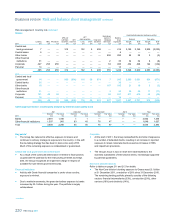 222
222 -
 223
223 -
 224
224 -
 225
225 -
 226
226 -
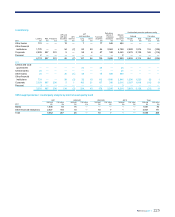 227
227 -
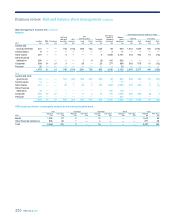 228
228 -
 229
229 -
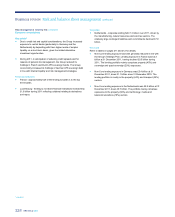 230
230 -
 231
231 -
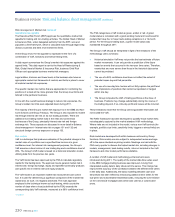 232
232 -
 233
233 -
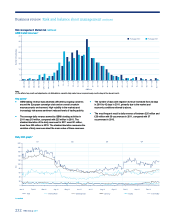 234
234 -
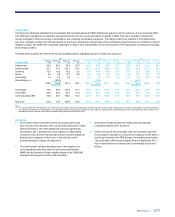 235
235 -
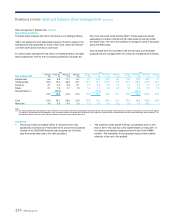 236
236 -
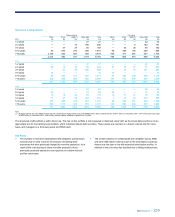 237
237 -
 238
238 -
 239
239 -
 240
240 -
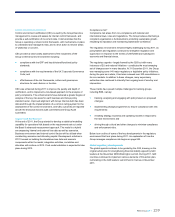 241
241 -
 242
242 -
 243
243 -
 244
244 -
 245
245 -
 246
246 -
 247
247 -
 248
248 -
 249
249 -
 250
250 -
 251
251 -
 252
252 -
 253
253 -
 254
254 -
 255
255 -
 256
256 -
 257
257 -
 258
258 -
 259
259 -
 260
260 -
 261
261 -
 262
262 -
 263
263 -
 264
264 -
 265
265 -
 266
266 -
 267
267 -
 268
268 -
 269
269 -
 270
270 -
 271
271 -
 272
272 -
 273
273 -
 274
274 -
 275
275 -
 276
276 -
 277
277 -
 278
278 -
 279
279 -
 280
280 -
 281
281 -
 282
282 -
 283
283 -
 284
284 -
 285
285 -
 286
286 -
 287
287 -
 288
288 -
 289
289 -
 290
290 -
 291
291 -
 292
292 -
 293
293 -
 294
294 -
 295
295 -
 296
296 -
 297
297 -
 298
298 -
 299
299 -
 300
300 -
 301
301 -
 302
302 -
 303
303 -
 304
304 -
 305
305 -
 306
306 -
 307
307 -
 308
308 -
 309
309 -
 310
310 -
 311
311 -
 312
312 -
 313
313 -
 314
314 -
 315
315 -
 316
316 -
 317
317 -
 318
318 -
 319
319 -
 320
320 -
 321
321 -
 322
322 -
 323
323 -
 324
324 -
 325
325 -
 326
326 -
 327
327 -
 328
328 -
 329
329 -
 330
330 -
 331
331 -
 332
332 -
 333
333 -
 334
334 -
 335
335 -
 336
336 -
 337
337 -
 338
338 -
 339
339 -
 340
340 -
 341
341 -
 342
342 -
 343
343 -
 344
344 -
 345
345 -
 346
346 -
 347
347 -
 348
348 -
 349
349 -
 350
350 -
 351
351 -
 352
352 -
 353
353 -
 354
354 -
 355
355 -
 356
356 -
 357
357 -
 358
358 -
 359
359 -
 360
360 -
 361
361 -
 362
362 -
 363
363 -
 364
364 -
 365
365 -
 366
366 -
 367
367 -
 368
368 -
 369
369 -
 370
370 -
 371
371 -
 372
372 -
 373
373 -
 374
374 -
 375
375 -
 376
376 -
 377
377 -
 378
378 -
 379
379 -
 380
380 -
 381
381 -
 382
382 -
 383
383 -
 384
384 -
 385
385 -
 386
386 -
 387
387 -
 388
388 -
 389
389 -
 390
390 -
 391
391 -
 392
392 -
 393
393 -
 394
394 -
 395
395 -
 396
396 -
 397
397 -
 398
398 -
 399
399 -
 400
400 -
 401
401 -
 402
402 -
 403
403 -
 404
404 -
 405
405 -
 406
406 -
 407
407 -
 408
408 -
 409
409 -
 410
410 -
 411
411 -
 412
412 -
 413
413 -
 414
414 -
 415
415 -
 416
416 -
 417
417 -
 418
418 -
 419
419 -
 420
420 -
 421
421 -
 422
422 -
 423
423 -
 424
424 -
 425
425 -
 426
426 -
 427
427 -
 428
428 -
 429
429 -
 430
430 -
 431
431 -
 432
432 -
 433
433 -
 434
434 -
 435
435 -
 436
436 -
 437
437 -
 438
438 -
 439
439 -
 440
440 -
 441
441 -
 442
442 -
 443
443 -
 444
444 -
 445
445 -
 446
446 -
 447
447 -
 448
448 -
 449
449 -
 450
450 -
 451
451 -
 452
452 -
 453
453 -
 454
454 -
 455
455 -
 456
456 -
 457
457 -
 458
458 -
 459
459 -
 460
460 -
 461
461 -
 462
462 -
 463
463 -
 464
464 -
 465
465 -
 466
466 -
 467
467 -
 468
468 -
 469
469 -
 470
470 -
 471
471 -
 472
472 -
 473
473 -
 474
474 -
 475
475 -
 476
476 -
 477
477 -
 478
478 -
 479
479 -
 480
480 -
 481
481 -
 482
482 -
 483
483 -
 484
484 -
 485
485 -
 486
486 -
 487
487 -
 488
488 -
 489
489 -
 490
490
 |
 |

230 RBS Group 2011
Risk management: Market risk continued
Quantitative risk appetite
The Executive Risk Forum (ERF) approves the quantitative market risk
appetite for trading and non-trading activities. The Global Head of Market
&Insurance Risk, under delegated authority from the ERF, sets and
populates a limit framework, which is cascaded down through legal entity,
division, business and desk level market risk limits.
At the Group level, the risk appetite is expressed in the form of a
combination of VaR, sensitivity and stress testing limits.
Adaily report summarises the Group’s market risk exposures against the
agreed limits. This daily report is sent to the Head of Restructuring &
Risk, Global Head of Market & Insurance Risk, business Chief Risk
Officers and appropriate business market risk managers.
Legal entities, divisions and lower levels in the business also have an
appropriate market risk framework of controls and limits in place to cover
all material market risk exposures.
The specific market risk metrics that are appropriate for controlling the
positions of a desk will be more granular than the Group level limits and
tailored to the particular business.
In line with the overall business strategy to reduce risk exposures, the
Group’s market risk limits were adjusted down during 2011.
The majority of the Group’s market risk exposure is in the GBM and Non-
Core divisions and Group Treasury. The Group is also exposed to market
risk through interest rate risk on its non-trading activities. There are
additional non-trading market risks in the retail and commercial
businesses of the Group, principally interest rate risk and foreign
exchange risk. These aspects are discussed in more detail in Balance
sheet management - Interest rate risk on pages 131 and 132 and
structural foreign currency exposures on page 133.
Risk models
VaR is a technique that produces estimates of the potential change in the
market value of a portfolio over a specified time horizon at a given
confidence level. For internal risk management purposes, the Group’s
VaR assumes a time horizon of one trading day and a confidence level of
99%. The Group's VaR model is based on a historical simulation model,
utilising data from the previous two years.
The VaR model has been approved by the FSA to calculate regulatory
capital for the trading book. The approval covers general market risk in
interest rate, foreign exchange, equity and specified commodity products
and specific risk in interest rate and equity products.
The VaR model is an important market risk measurement and control
tool. It is used for determining a significant component of the market risk
capital and, as such, it is regularly assessed. The main approach
employed is the technique known as back-testing, which counts the
number of days when a loss (as defined by the FSA) exceeds the
corresponding daily VaR estimate, measured at a 99% confidence level.
The FSA categorises a VaR model as green, amber or red. A green
model status is consistent with a good working model and is achieved for
models that have four or fewer back-testing exceptions in a 12-month
period. For the Group’s trading book, a green model status was
maintained throughout 2011.
The Group’s VaR should be interpreted in light of the limitations of the
methodology used, as follows:
xHistorical simulation VaR may not provide the best estimate of future
market movements. It can only provide a prediction of the future
based on events that occurred in the two-year time series. Therefore,
events that are more severe than those in the historical data series
cannot be predicted.
xThe use of a 99% confidence level does not reflect the extent of
potential losses beyond that percentile.
xThe use of a one-day time horizon will not fully capture the profit and
loss implications of positions that cannot be liquidated or hedged
within one day.
xThe Group computes the VaR of trading portfolios at the close of
business. Positions may change substantially during the course of
the trading day and, if so, intra-day profit and losses will be incurred.
These limitations mean that the Group cannot guarantee that losses will
not exceed the VaR.
The RNIV framework has been developed to quantify those market risks
not adequately captured by the market standard VaR methodology.
Where risks are not included in the model, various non-VaR controls (for
example, portfolio size limits, sensitivity limits, triggers or stress limits) are
in place.
Risk models are developed both within business units and by Group
functions. Risk models are also subject to independent review and sign-
off to the same standard as pricing models. Meetings are held with the
FSA every quarter to discuss the traded market risk, including changes in
models, management, back-testing results, risks not included in the VaR
framework and other model performance statistics.
Anumber of VaR model and methodology enhancements were
introduced during 2011. The quality of the market data time series used
in the ABS mortgage trading business was improved, moving from
interpolated weekly data to daily observed time series. This change has
improved the accuracy of the correlation between the different time series
in the daily data. Additionally, the basis modelling between cash and
derivatives has been refined by introducing additional time series for the
sub-prime and subordinated residential bonds, reducing the over-reliance
on the commercial mortgage basis which was used as a conservative
proxy.
*unaudited
Business review Risk and balance sheet management continued
